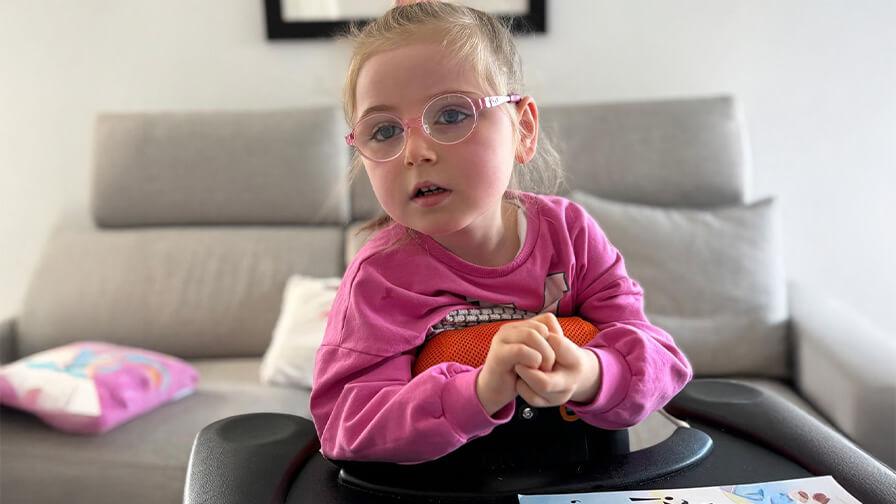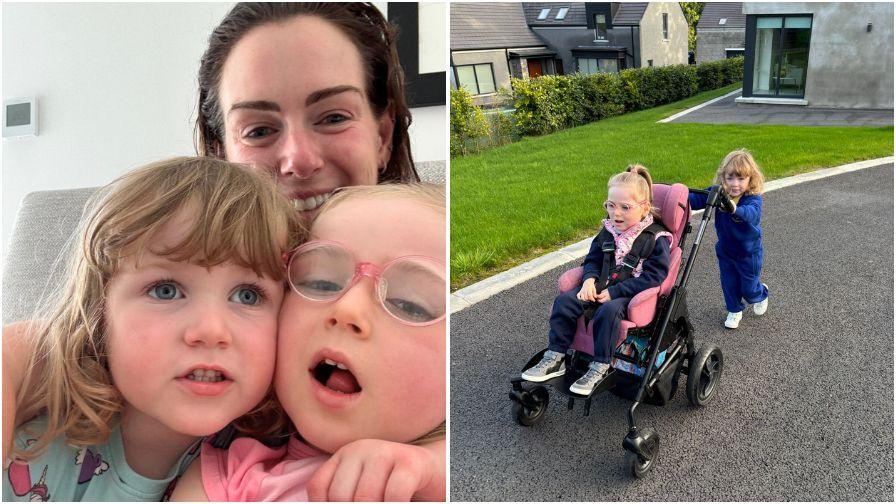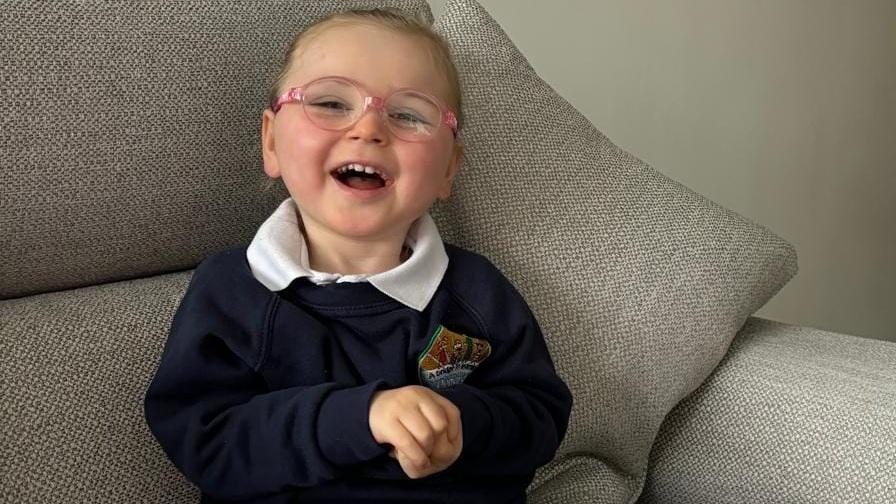breadcrumb navigation:
- Home /
- Research /
- Family stories /
-
current page
Mollie's story: Rett syndrome
Mollie's story: Rett syndrome
Published on
Updated:
Mollie's story
Rett syndrome

As a baby, Mollie had been progressing well until she was around 12 months old, when things started to slow down. “By 15 months we had grave concerns,” says her dad, Mark. “She wasn’t hitting any of the expected milestones and was starting to lose skills she’d previously had – like the ability to sit and play with her toys, crawl/seasnake, general attention and the use of her hands.”
Mollie underwent genetic testing and three months later, Mark and wife Claire received a devastating phone call with the results. “That day will always be burned in my memory. Basically, everything fell apart right there and then, there’s no other way to describe it,” says Mark.
I’ve never heard Mollie say daddy, never seen her walk. Skills she had have gone”
Rett syndrome is caused by changes in the MECP2 gene, important for healthy brain function. Little girls like Mollie usually reach their early developmental milestones, with their parents unaware of any underlying genetic changes. Symptoms start subtly but sadly worsen over time, affecting communication, movement and memory. Some also experience seizures, and many will ultimately rely on 24-hour care for the rest of their lives.
Girls with Rett syndrome can experience many different symptoms but the biggest for Mollie, says her dad, is physical weakness. “Mollie has never walked, or really crawled. She is very weak, there is nothing there, no power, whereas some children with Rett syndrome do walk and are able to move more.”
“The other thing for us, which hurts like hell but at the same time we are so lucky, is that Mollie has a younger sister, Lily,” adds Mark. “She wants to play with Mollie, to hug her, and doesn’t understand why Mollie doesn’t move. It’s heartbreaking to watch one child live the life the other should have too.”

Mollie’s needs are such that it can put a huge amount of pressure on the family. The daily routine is very rigid, and includes physiotherapy, medications and special food preparation. The level of care and equipment needed is similar to having a newborn baby, says Mark.
But despite the challenges she faces, Mollie is a very happy, loving and sociable child. “She displays no withdrawn traits at all. She’s always smiling, she laughs, she knows exactly who people are. She bonds with people very quickly and you can have a very good relationship with her through the eyes,” explains Mark.
We see glimpses of Mollie’s personality, and it just feels like she is stuck in a glass cage, waiting to get out – that’s the toughest part”
As the family has adapted to life, they have been lifted by news of the potential for gene therapy to help girls like Mollie in the near future.
In 2009, Action Medical Research awarded over £180,000 to support the search for new treatments for Rett syndrome. This pioneering work generated initial proof that gene therapy held promise to treat, and potentially even cure, Rett syndrome. Now, 15 years later, clinical trials are underway. The possibility of life-changing treatment is closer than ever before.
For Mark and Claire, it can’t come soon enough. “Seeing Mollie where she is now, just being able to regain basic skills would be huge. We’re so close to getting to where we need to be with this – but Mollie’s getting older by the day. This has already taken so much away from her,” says Mark.
“We know equally that some families have been waiting much longer than us – and unfortunately, there are many children who have been lost along this journey. But there is now a huge amount of hope.”
Thank you to Reverse Rett for putting us in contact with Mollie's family.

